One-Eyed Giant Polyphemus – Most Famous Of The Cyclops In Greek Mythology
Ellen Lloyd - AncientPages.com - Polyphemus, whose name means "abounding in songs and legends," was a famous one-eyed giant in Greek mythology. He was the son of god Poseidon and Thoosa and the most famous of the Cyclops.
Cyclops were an ancient race of giants with a single eye in the center of their forehead. They were described as builders, blacksmiths, and craftsmen.
Polyphemus is an intriguing but horrible creature mentioned in Homer's Odyssey, probably composed near the end of the 8th Century B.C.
The classical Greek poem describes the Greek hero Odysseus (or Ulysses, as he was known in Roman myths) and his long journey home to Ithaca following the fall of Troy.
Odysseus traveled to distant countries for ten years and encountered remarkable people and creatures. His journey took him through the Ionian Islands and the Peloponnese and as far away as Egypt, North Africa, and the western Mediterranean, as the displeased sea-god Poseidon prevented him from reaching his home.
In Homer’s epic, we learn how Odysseus encountered the one-eyed Polyphemus on his return from Troy. The Greek hero and his men came across a cave and decided to enter it. Inside the cave, they ate and rested until they finally fell asleep.
Amphora painting of Odysseus and his men blinding Polyphemus (Eleusis museum) Credit: Wikipedia
When Polyphemus returned to his cave, he found the intruders and became furious. Odysseus and his friends could not escape because the giant had rolled a huge stone against the mouth of the cave to close the entrance. The furious Cyclops grabbed two of the men and ate them. The next morning, the giant left the cave to graze his sheep. When the giant returned in the evening, he ate two more of the captive men.
Odysseus offered Polyphemus some strong and undiluted wine given to him earlier on his journey. Before passing out, the giant asked Odysseus’ name and was told the Greek hero’s name was “Nobody.”
As Polyphemus was sleeping, the Greek hero took a wooden stake in the fire and drove it into the giant’s eye, making him blind. Polyphemus screamed for help, and the other Cyclops on the island came running. They asked him who had done this to him, and the giant replied, “Nobody.” Hearing this, the other Cyclops all returned home laughing. They thought Polyphemus was afflicted by divine power and recommended prayer as the answer.
In the morning, the blind Cyclops let the sheep out to graze. With his hand, he checked their backs to ensure the men were not escaping. However, Odysseus and his men had tied themselves to the undersides of the animals and managed to get away.
The Blinding of Polyphemus - Pellegrino Tibaldi (1527-1596)
When Odysseus was on his ship, he boastfully revealed his real name. This turned out to be unwise because the one-eyed giant Polyphemus prayed to his father, the sea-god Poseidon, asking for revenge. Poseidon was angry about what had happened to his son. He persecuted Poseidon and persecuted Odysseus at sea, throwing huge rocks toward the ship, which Odysseus barely escaped.
The story of Polyphemus became a favorite of classical poets and sculptors, inspiring a play by Euripides (“The Cyclops”) and appearing in the Aeneid of Virgil.
Ovid also popularized it in his Metamorphoses, but the story has a different ending. Ovid wrote that Polyphemus and Galatea married, and from their offspring were born several “savage” races, including the Celts, the Gauls, and the Illyrians.

Arimaspians: Mysterious Mighty One-Eyed People From The North
Ancient myths and legends about mysterious one-eyes people are not uncommon. For example, Greek records mention the Arimaspians, a tribe of normal human-sized horsemen with only one eye in the middle of their forehead.
Updated on July 27, 2022
Written by Ellen Lloyd – AncientPages.com
Copyright © AncientPages.com All rights reserved. This material may not be published, broadcast, rewritten or redistributed in whole or part without the express written permission of AncientPages.com
Expand for referencesMore From Ancient Pages
-
 Surprising Discovery: Massive Cemetery Built 5,000 Years Ago Near Lake Turkana, Kenya
Archaeology | Aug 24, 2018
Surprising Discovery: Massive Cemetery Built 5,000 Years Ago Near Lake Turkana, Kenya
Archaeology | Aug 24, 2018 -
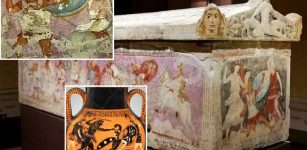 Sarcophagus Of The Amazons: Etruscan Coffin With Paintings Of Dynamic Fighting Scenes Of Greeks With Amazons
Featured Stories | Oct 18, 2022
Sarcophagus Of The Amazons: Etruscan Coffin With Paintings Of Dynamic Fighting Scenes Of Greeks With Amazons
Featured Stories | Oct 18, 2022 -
 Secrets Of The Lost Ancient Sahara Civilization
Civilizations | Oct 26, 2018
Secrets Of The Lost Ancient Sahara Civilization
Civilizations | Oct 26, 2018 -
 Amanitore – Nubian Warrior Queen And Her Pyramids
Historical Figures | Aug 13, 2018
Amanitore – Nubian Warrior Queen And Her Pyramids
Historical Figures | Aug 13, 2018 -
 First Human Culture Lasted 20,000 Years Longer Than Thought – New Study
Archaeology | Jan 11, 2021
First Human Culture Lasted 20,000 Years Longer Than Thought – New Study
Archaeology | Jan 11, 2021 -
 Researchers Use 21st Century Methods To Record 2,000 Years Of Ancient Graffiti In Egypt
Archaeology | Mar 31, 2023
Researchers Use 21st Century Methods To Record 2,000 Years Of Ancient Graffiti In Egypt
Archaeology | Mar 31, 2023 -
 Kingdoms Of Judah And Babylon Remained In Long-Lasting Conflict
Featured Stories | Sep 5, 2019
Kingdoms Of Judah And Babylon Remained In Long-Lasting Conflict
Featured Stories | Sep 5, 2019 -
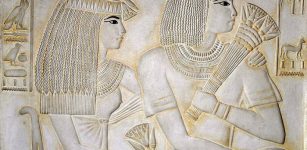 Mystery Of Merit Ptah And The Unknown Identity Of Peseshet Who History Forgot
Archaeology | Jan 8, 2020
Mystery Of Merit Ptah And The Unknown Identity Of Peseshet Who History Forgot
Archaeology | Jan 8, 2020 -
 Flower Of Life: Ancient Sacred Geometry Symbol And Blueprint Of The Universe
Ancient Symbols | Oct 8, 2017
Flower Of Life: Ancient Sacred Geometry Symbol And Blueprint Of The Universe
Ancient Symbols | Oct 8, 2017 -
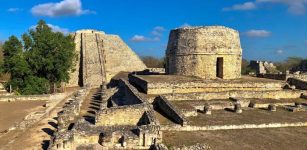 Climate, Conflict, Collapse: How Drought Destabilized The Last Major Precolonial Mayan City
Featured Stories | Jul 25, 2022
Climate, Conflict, Collapse: How Drought Destabilized The Last Major Precolonial Mayan City
Featured Stories | Jul 25, 2022 -
 Peculiar Accounts Of Ancient Flying Metallic Dragons And Bells In China And Japan
Ancient Mysteries | Dec 27, 2018
Peculiar Accounts Of Ancient Flying Metallic Dragons And Bells In China And Japan
Ancient Mysteries | Dec 27, 2018 -
 Nygrotta: Species Migration Occurred Due To Climatic Shifts Millennia Ago – Ancient DNA And Bones Show
Paleontology | Apr 5, 2024
Nygrotta: Species Migration Occurred Due To Climatic Shifts Millennia Ago – Ancient DNA And Bones Show
Paleontology | Apr 5, 2024 -
 Riddle Of Two Undeciphered Elamite Scripts
Featured Stories | May 19, 2021
Riddle Of Two Undeciphered Elamite Scripts
Featured Stories | May 19, 2021 -
 Impressive Inca Agricultural Terraces Discovered In Cusco, Peru
Archaeology | Jan 25, 2018
Impressive Inca Agricultural Terraces Discovered In Cusco, Peru
Archaeology | Jan 25, 2018 -
 The Tuli Mummy: Botswana’s Only Ancient Mummified Human Body Discovered So Far
Ancient History Facts | Oct 14, 2016
The Tuli Mummy: Botswana’s Only Ancient Mummified Human Body Discovered So Far
Ancient History Facts | Oct 14, 2016 -
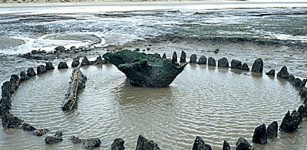 Remarkable 4,000-Year-Old Seahenge In Norfolk – What Was The Purpose Of The Bronze Age Monument?
Featured Stories | Jul 4, 2022
Remarkable 4,000-Year-Old Seahenge In Norfolk – What Was The Purpose Of The Bronze Age Monument?
Featured Stories | Jul 4, 2022 -
 Discovery Of Fortified Villages And Earthworks Re-Writes Ancient History Of Amazon
Archaeology | Mar 29, 2018
Discovery Of Fortified Villages And Earthworks Re-Writes Ancient History Of Amazon
Archaeology | Mar 29, 2018 -
 Did Leonardo Da Vinci Invent Contact Lenses In 1508?
Ancient Technology | Dec 10, 2015
Did Leonardo Da Vinci Invent Contact Lenses In 1508?
Ancient Technology | Dec 10, 2015 -
 Obeah: Who Were The Feared Shadow Killers Of Jamaica?
Ancient Traditions And Customs | Sep 24, 2018
Obeah: Who Were The Feared Shadow Killers Of Jamaica?
Ancient Traditions And Customs | Sep 24, 2018 -
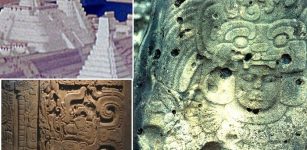 Tikal Of Maya: Sophisticated Culture That Experienced Humble Start, Golden Age, Wars And Decline
Featured Stories | Apr 4, 2022
Tikal Of Maya: Sophisticated Culture That Experienced Humble Start, Golden Age, Wars And Decline
Featured Stories | Apr 4, 2022



